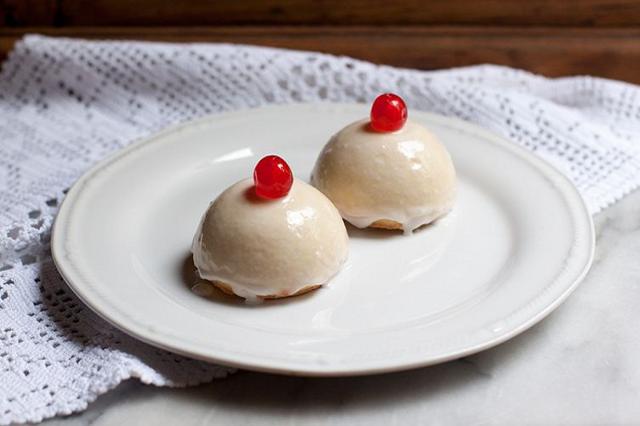The scandalous dessert of the “The Leopard”
“Why the Holy Office did not forbid these sweets when it could?”, exclaims the firm Don Fabrizio of The Leopard. What delicacy can provoke such indignation in a man with a great moral rigour? They are the obscene Virgins’ pastries, “the breasts of Saint Agata sold by the monasteries and devoured by revelers!”.
CATANIA OR AGRIGENTO? By reading the pages of the novel by Tomasi di Lampedusa, it would seem clear that the above quote is referred to the breasts of Saint Agata, that is, the typical cassatelle (pastries) of Catania sold during the celebrations of the patron saint. The sweets exposed on the table for the Ponteleone dance came from the plain of Catania, however, their description doesn’t correspond to those cassatelle. The refined mixture of blancmange, pistachio and cinnamon enclosed in the desserts tasted by Don Fabrizio reminds another type of “breast”: the Virgins’ of Sambuca di Sicilia (Agrigento), not far from the places of The Leopard.
TOWN DELICACIES. These sweets are composed of a pastry filled with milk cream, candied pumpkin and pieces of dark chocolate with cinnamon and cloves essences. The difference from the breasts of Saint Agata (a heart of ricotta wrapped in royal paste and frosting) is clear. According to tradition, the pastry of Sambuca was made in 1725 by the nun Casale di Rocca Menna for the marriage of the marquis Pietro Beccadelli. Wanting to create something that would amaze the nobles, the nun decided to prepare rustic, but tasty, delicacy. The recipe and the origin of this delicacy are told about the book As a figure of speech by the historian Alfonso Di Giovanna: “Flour, eggs, milk and yeast. It consists of a sheet dough round like a full moon; a little bit of everything at the centre: […] candied pumpkin, cream, cinnamon and cloves essences, some piece of chocolate and… whatever else the Lord will inspire me…”.

BREASTS. Unlike those of Saint Agata, the Virgins’ breasts appear to lack a religious origin, even if their tasting is linked to the celebrations of the Holy Madonna dell’Udienza, patron saint of Sambuca. Their round shape with a darker central protuberance reminds the image of a breast, just like the cassatelle of Catania. Hence the hypothesis that even this sweet may be related to ancient female cults in Sicily. However, he written tradition wants that their appearance is due to the landscape of Sambuca: “The shape of the hills suggested that we should present to the Marquis a sweet that has the shape and as to the content brings the sweetness of this land”. According to the historian Di Giovanna the mountains from the Anguillara valley to the Minnulazza coast inspired the nun Virginia. The name of the Virgins’ breasts instead would not allude to the breasts, but to the name of the nun Virginia Casale di Rocca Menna (Menna reminds minne, the Sicilian word for breasts).
Translated by Daniela Marsala



